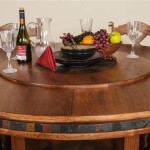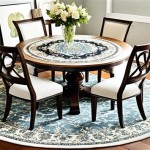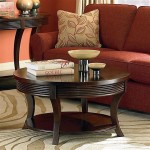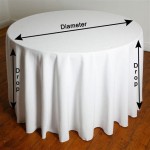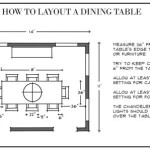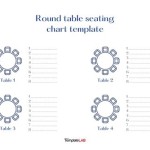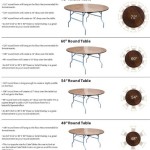How To Make a Backdrop with Plastic Tablecloths
Creating a visually appealing backdrop can significantly enhance the aesthetic of various events, including parties, photo shoots, and video conferences. While professional backdrops can be costly, a budget-friendly and surprisingly effective alternative involves utilizing plastic tablecloths. This method offers versatility in color, texture, and size, allowing for customization to suit specific needs and preferences. The following article provides a detailed guide on constructing a backdrop using plastic tablecloths, covering essential materials, step-by-step instructions, and creative design ideas.
Before commencing the construction process, it is crucial to gather the necessary materials. These materials are readily available at most party supply stores or online retailers, ensuring accessibility and convenience. The core component is, of course, the plastic tablecloths. The quantity needed will depend on the desired size of the backdrop. It is advisable to purchase slightly more than the calculated amount to account for any errors or design adjustments. The tablecloths come in various colors and thicknesses; selecting the appropriate color scheme and quality is important to achieve the desired visual effect.
In addition to the tablecloths, a supporting structure is essential. This can be a backdrop stand, a curtain rod, or even a sturdy wall. The choice of structure will influence the method of attachment. For a backdrop stand or curtain rod, a long length of strong tape, such as gaffer tape or masking tape, is suitable. Alternatively, binder clips or clothespins can be utilized to secure the tablecloths. If attaching the backdrop directly to a wall, adhesive hooks designed for temporary use are recommended to prevent damage to the wall's surface. Other helpful tools include scissors or a utility knife for cutting the tablecloths, a measuring tape to ensure accurate dimensions, and optionally, decorative elements such as fairy lights, balloons, or fabric flowers to enhance the backdrop's visual appeal.
Preparing the Tablecloths
The initial step in constructing the backdrop involves preparing the plastic tablecloths. This stage focuses on cutting and arranging the tablecloths to achieve the desired texture and dimensions. Several techniques can be employed, each offering a unique aesthetic. One common method is to cut the tablecloths into strips of varying widths. The width of the strips will dictate the density and texture of the backdrop. Narrower strips create a denser, more textured effect, while wider strips result in a more open and airy appearance.
To ensure uniformity, it is recommended to use a measuring tape and marker to mark the cutting lines on the tablecloths. Once marked, the tablecloths can be cut using scissors or a utility knife. A cutting mat is advised when using a utility knife to protect the underlying surface. Maintaining consistent cuts will contribute to a more professional and polished final product. After cutting the strips, it is beneficial to organize them by color and width to facilitate the arrangement process.
Another technique involves creating a fringe effect. This entails cutting slits along the bottom edge of the tablecloths, leaving a solid header at the top for attachment. The depth and spacing of the slits will determine the appearance of the fringe. For a denser fringe, the slits should be closer together and deeper. For a more sparse fringe, the slits should be farther apart and shallower. Experimentation with different depths and spacings can lead to visually interesting variations. When creating a fringe effect, it's crucial to ensure that the header remains intact to provide a secure attachment point.
A third approach involves leaving the tablecloths largely intact and simply layering them to create depth and dimension. This method is particularly effective when using tablecloths of different colors or textures. By overlapping the tablecloths, a rich and visually complex backdrop can be achieved. This technique is also conducive to incorporating other decorative elements, such as fabric scraps or ribbon, to further enhance the backdrop's visual appeal. The key to success with this method lies in careful layering and strategic placement of the different elements.
Assembling the Backdrop
With the tablecloths prepared, the next step involves assembling the backdrop. This process entails attaching the tablecloth strips or sheets to the chosen support structure. The method of attachment will depend on the type of support structure being used. If using a backdrop stand or curtain rod, the most common approach is to attach the tablecloths using tape, binder clips, or clothespins. Starting at one end of the support structure, attach the first tablecloth strip or sheet, ensuring that it is securely fastened.
When using tape, apply a generous amount to the top edge of the tablecloth and press it firmly onto the support structure. Overlap each subsequent tablecloth strip or sheet slightly to create a seamless and cohesive appearance. The amount of overlap will depend on the desired density of the backdrop. For a denser backdrop, increase the overlap; for a more sparse backdrop, decrease the overlap. Maintaining consistent overlap throughout the assembly process will contribute to a more uniform and professional result.
If using binder clips or clothespins, attach them to the top edge of the tablecloth and then clip them onto the support structure. This method offers greater flexibility in adjusting the position of the tablecloths, allowing for fine-tuning of the backdrop's appearance. It also allows for easier removal and reuse of the tablecloths. However, binder clips and clothespins may be more visible than tape, so it is important to choose clips that complement the backdrop's color scheme. Alternatively, ribbon or fabric strips can be used to conceal the clips.
If attaching the backdrop directly to a wall, adhesive hooks designed for temporary use are recommended. These hooks feature an adhesive backing that allows them to be easily attached to the wall and removed without causing damage. Before attaching the hooks, it is essential to clean the wall surface to ensure proper adhesion. Once the hooks are in place, the tablecloths can be attached using tape, binder clips, or clothespins. This method is particularly suitable for creating smaller backdrops or for situations where a freestanding support structure is impractical.
Creative Design Ideas and Customization
Once the basic backdrop is assembled, the creative possibilities are virtually limitless. The plastic tablecloth backdrop serves as a blank canvas upon which to express individual artistic vision and tailor the design to suit specific event themes or personal preferences. Incorporating additional decorative elements can significantly enhance the backdrop's visual impact. Fairy lights, for instance, can add a touch of whimsy and elegance, creating a soft and inviting ambiance. Strands of fairy lights can be draped across the backdrop, woven through the tablecloth strips, or arranged in specific patterns to create focal points. Battery-operated fairy lights are particularly convenient, as they eliminate the need for nearby power outlets.
Balloons are another versatile decorative element that can be used to add color and dimension to the backdrop. Balloons can be attached to the backdrop randomly, arranged in elaborate balloon arches, or used to create specific shapes or patterns. Helium-filled balloons can be tethered to the backdrop to add height and visual interest. The color of the balloons should complement the color scheme of the tablecloths and the overall theme of the event. Using balloons of varying sizes and textures can further enhance the backdrop's visual appeal.
Fabric flowers, paper garlands, and ribbon streamers offer additional opportunities for customization. Fabric flowers can be attached to the backdrop using hot glue or fabric adhesive, adding a touch of elegance and sophistication. Paper garlands can be draped across the backdrop to create a festive and celebratory atmosphere. Ribbon streamers can be hung from the top of the backdrop, adding movement and visual texture. The choice of decorative elements should be guided by the overall aesthetic and the desired mood.
Furthermore, consider incorporating personalized elements into the backdrop design. This could include photographs, banners, or handmade decorations that reflect the personality of the person or event being celebrated. For example, a birthday party backdrop could feature photos of the birthday person, while a wedding backdrop could incorporate the names and wedding date of the couple. The addition of personalized elements will make the backdrop more meaningful and memorable. Stencils can be used to spray paint designs directly onto the tablecloth backdrop. By carefully selecting a stencil and spray paint color, intricate designs can be added to the plain backdrop.
Ultimately, the design of the plastic tablecloth backdrop is limited only by imagination. By experimenting with different colors, textures, and decorative elements, a unique and visually stunning backdrop can be created that perfectly complements the event or occasion. The key is to plan ahead, gather the necessary materials, and allow ample time for assembly and customization. With a little creativity and effort, a plastic tablecloth backdrop can transform any space into a captivating and memorable setting.

Diy Pinata Fringe Photo Backdrop A Kailo Chic Life

Diy Pinata Fringe Photo Backdrop A Kailo Chic Life

Photo Booth Backdrop Makoodle

Diy Party Background For 5 Or Less

Easy Diy Fringe Backdrop A Step By Tutorial

Diy Party Background For 5 Or Less

How To Make An Easy Party Backdrop Des And Sses

The Easiest Diy Fringe Tablecloth Party Backdrop Ever

Diy Pinata Fringe Photo Backdrop A Kailo Chic Life

D I Y Photo Booth Backdrop For 10 The Thinking Closet
Related Posts

